Lunch on the Wing: Mantises Snack on Birds (Photos)
Death at the feeder
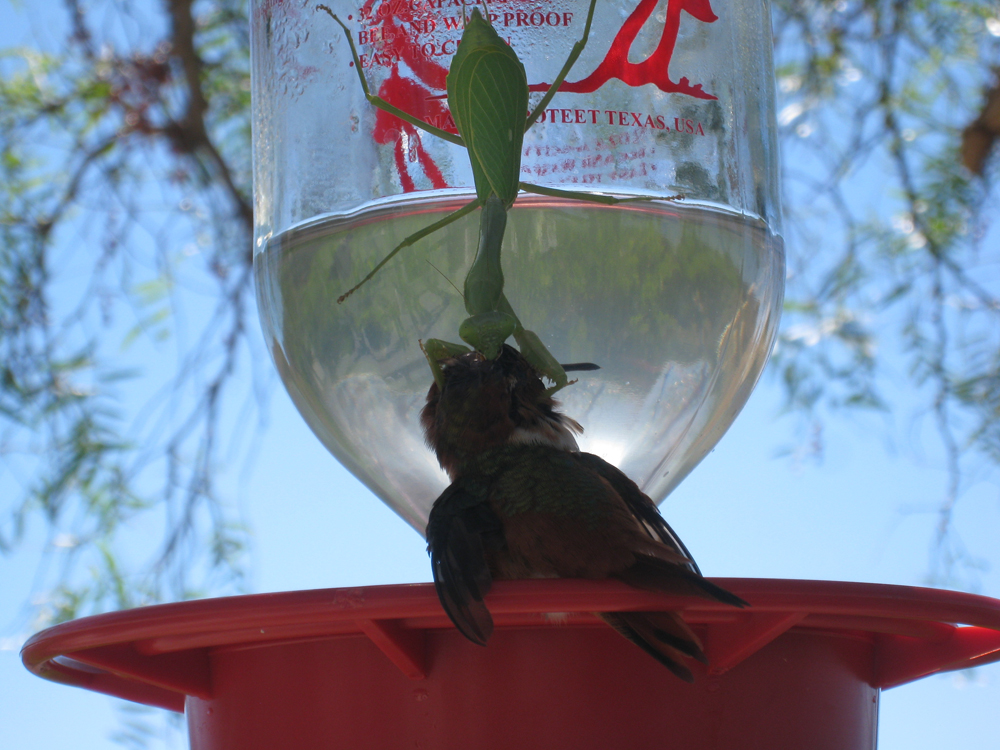
Stagmomantis limbata, also known as the Arizona bordered mantis, eating an Allen’s hummingbird (Selasphorus sasin) in San Juan Capistrano, California. This mantis species is native to North America, but the study found that 55 percent of birds that fell victim to mantis attacks in North America were caught by invasive mantis species. [Read full story about the bird-eating mantises]
Source: Martin Nyffeler, Michael R. Maxwell, J. V. Remsen, Jr. (2017), Bird predation by praying mantises: a global perspective, The Wilson Journal of Ornithology 129: 331-344.
A deadly encounter
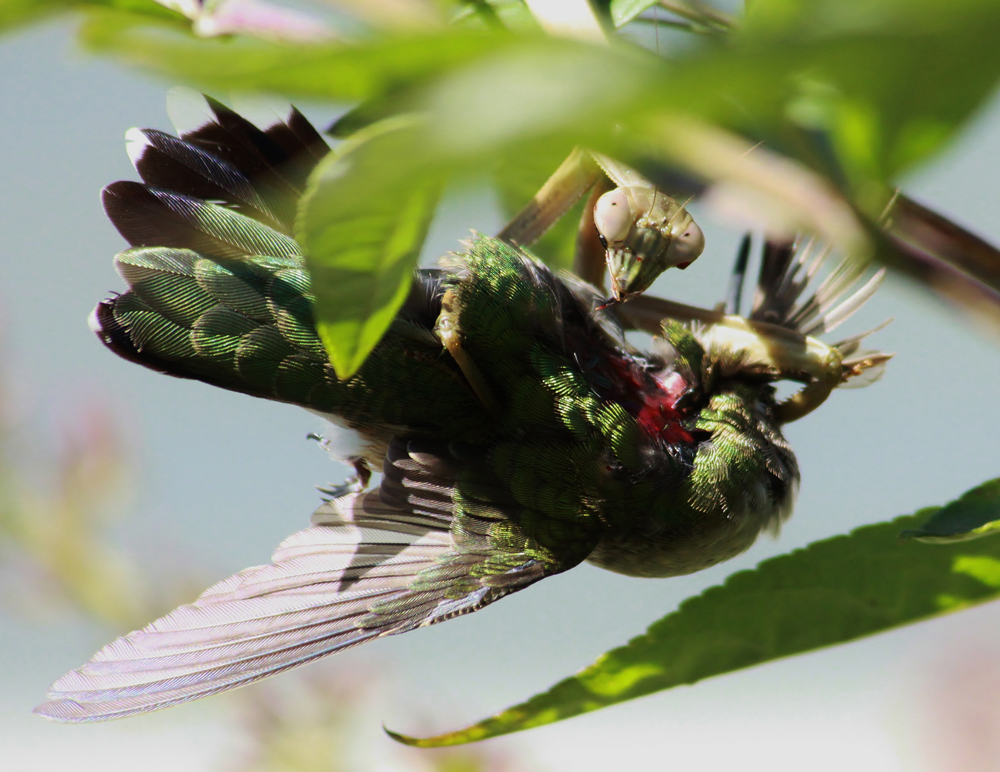
A Chinese mantis (Tenodera sinensis) eating a ruby-throated hummingbird (Archilochus colubris) in Biggsville, Illinois. T. sinensis is native to Asia, and was accidentally introduced to the wild in the U.S. in 1896.
Source: Martin Nyffeler, Michael R. Maxwell, J. V. Remsen, Jr. (2017), Bird predation by praying mantises: a global perspective, The Wilson Journal of Ornithology 129: 331-344.
"Truly amazed"
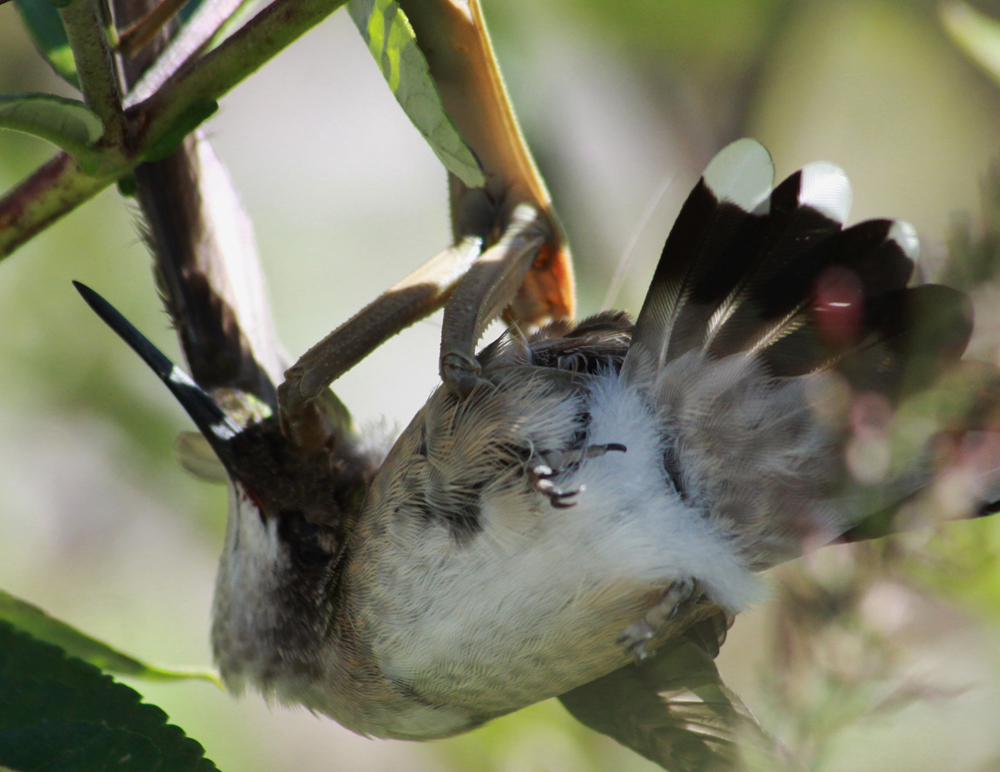
Photographer Randy Anderson captured this image of a Chinese mantis and its ruby-throated hummingbird prey in his garden, sharing it in 2011 on the website What's That Bug? He was "truly amazed" by the sight; though he had seen many butterflies fall prey to mantises, this was the first time he had spied a mantis with a bird in its grasp.
Source: Martin Nyffeler, Michael R. Maxwell, J. V. Remsen, Jr. (2017), Bird predation by praying mantises: a global perspective, The Wilson Journal of Ornithology 129: 331-344.
Multitasking mantis
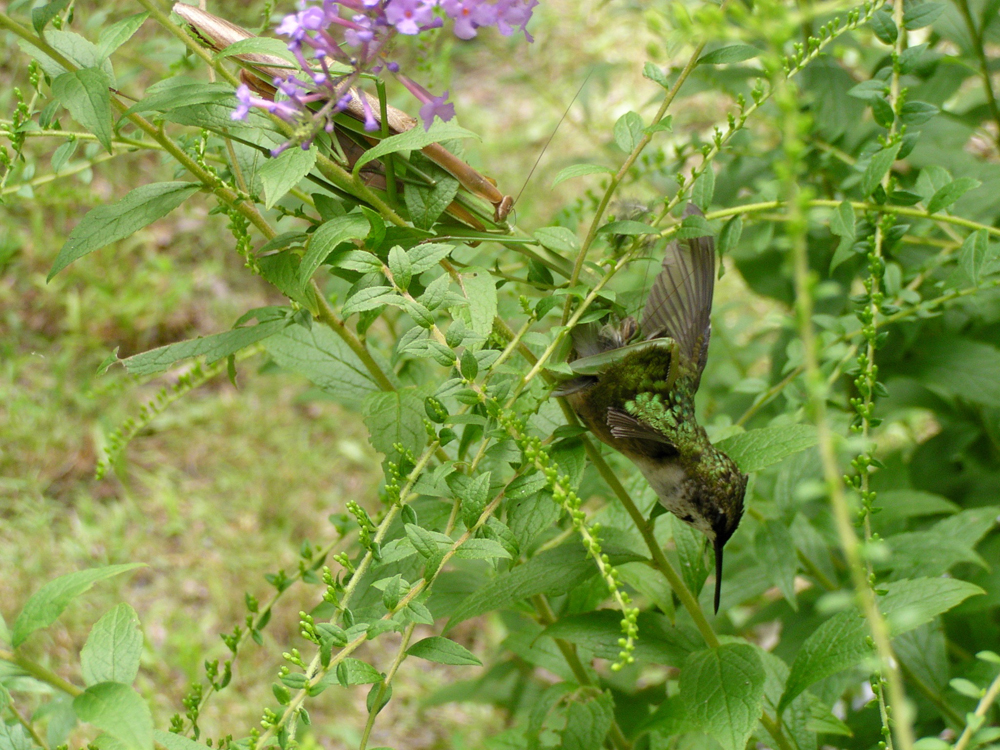
A female Chinese mantis (Tenodera sinensis) eating an immature male ruby-throated Hummingbird (Archilochus colubris) in Clermont, New Jersey, with a courting male on her back.
Sign up for the Live Science daily newsletter now
Get the world’s most fascinating discoveries delivered straight to your inbox.
Source: Martin Nyffeler, Michael R. Maxwell, J. V. Remsen, Jr. (2017), Bird predation by praying mantises: a global perspective, The Wilson Journal of Ornithology 129: 331-344.
A date for dinner
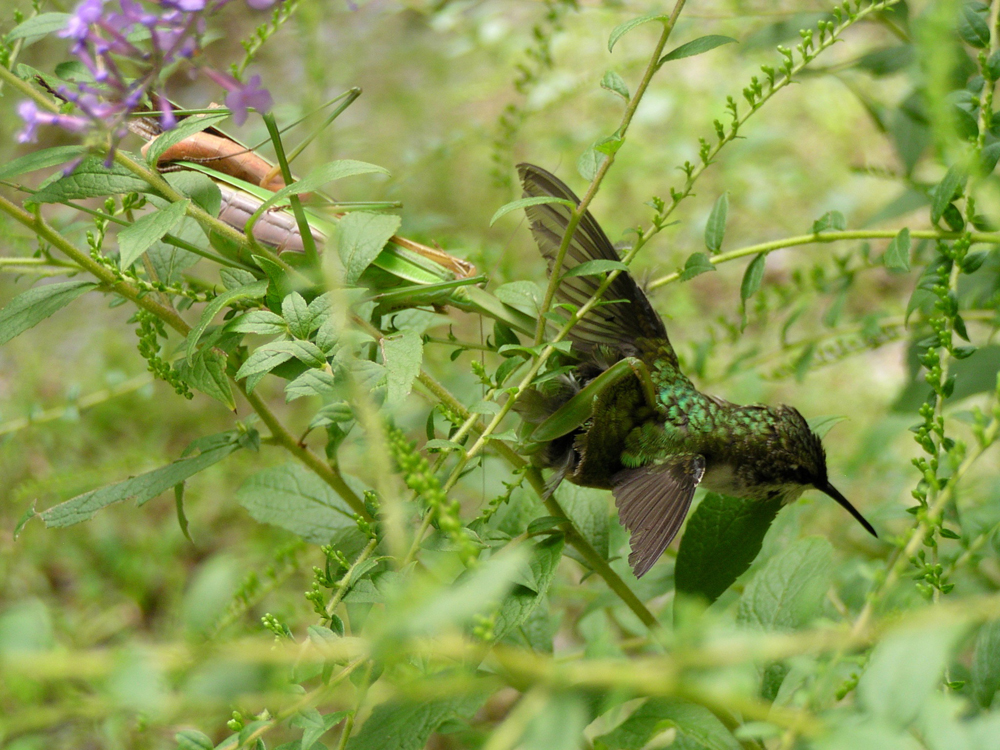
The female Tenodera sinensis mantis feasts on her hummingbird prey, as a male tries to mate with her. A recent study tracking bird predation in mantises found 147 examples worldwide of mantises trapping and eating birds — and all of the mantises were female.
Source: Martin Nyffeler, Michael R. Maxwell, J. V. Remsen, Jr. (2017), Bird predation by praying mantises: a global perspective, The Wilson Journal of Ornithology 129: 331-344.
Impaled, then eaten
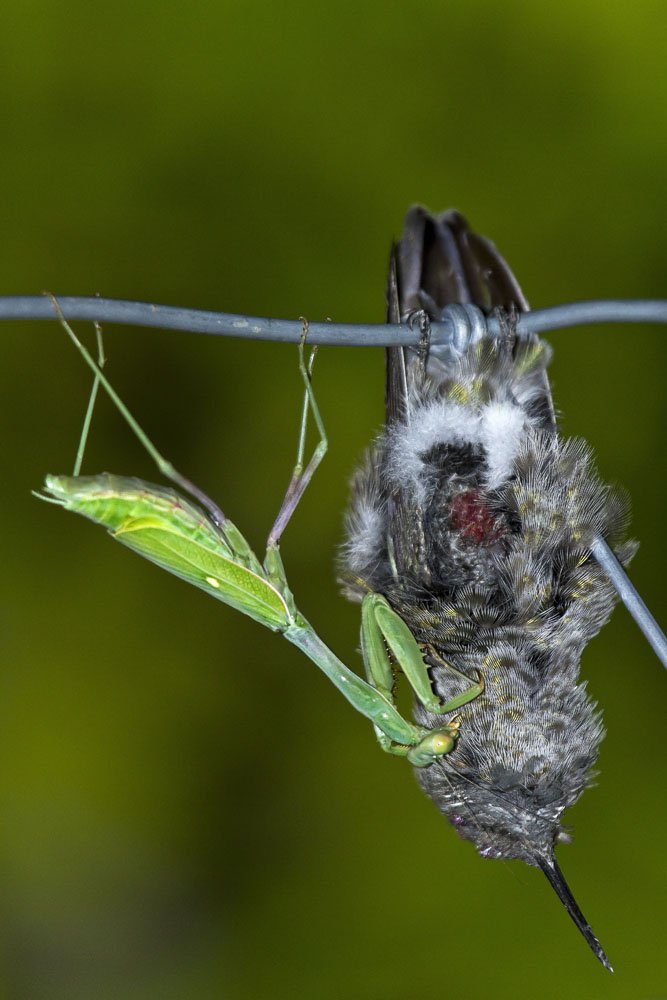
Mantises have been found to scavenge birds that are already dead, according to the new study. Here, an Arizona bordered mantis (Stagmomantis limbata) feasts on an Anna's hummingbird (Calypte anna) in the Sierra foothills, in California. The bird first became impaled on barbed wire, and the mantis was later seen feeding on the carcass.
Source: Martin Nyffeler, Michael R. Maxwell, J. V. Remsen, Jr. (2017), Bird predation by praying mantises: a global perspective, The Wilson Journal of Ornithology 129: 331-344.
A European invader
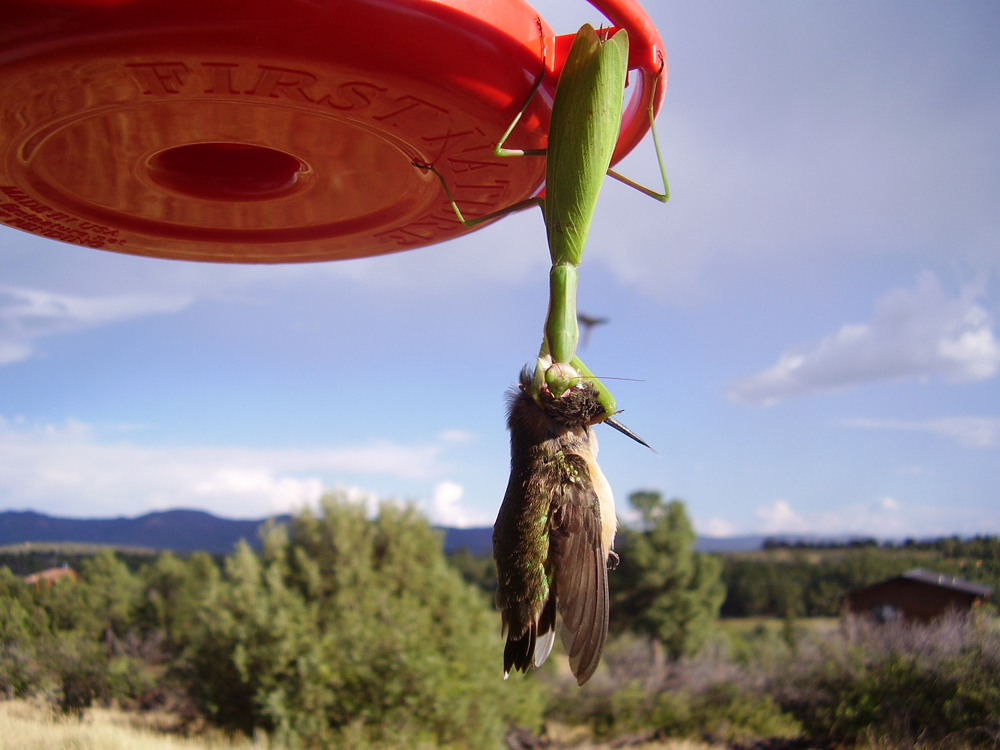
A European mantis (Mantis religiosa) eating a black-chinned hummingbird (Archilochus alexandri) in Millwood, Colorado. This mantis species originated in southern Europe, and was accidentally introduced to North America in 1899. Many hummingbirds that fall victim to mantises are caught near hummingbird feeders or flower beds, the study authors found.
Source: Martin Nyffeler, Michael R. Maxwell, J. V. Remsen, Jr. (2017), Bird predation by praying mantises: a global perspective, The Wilson Journal of Ornithology 129: 331-344.
Hummingbird prey
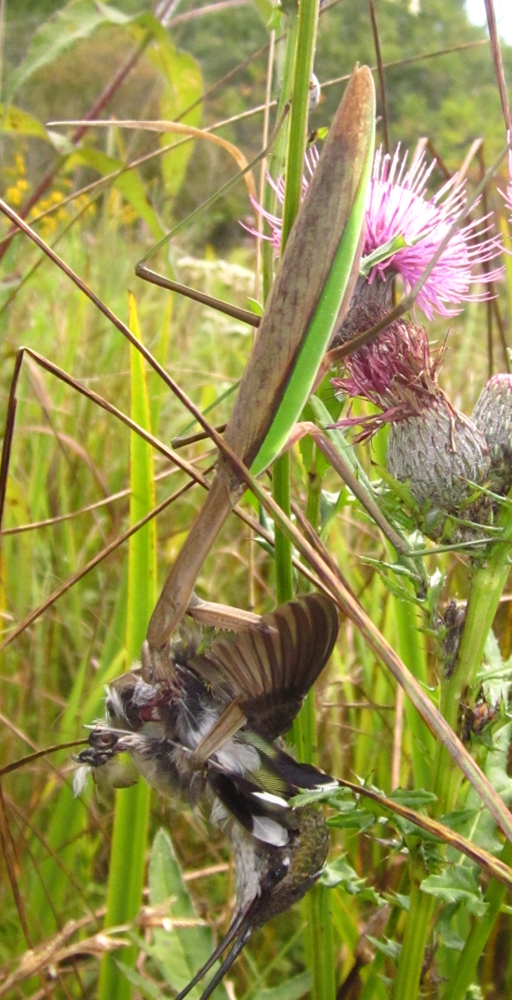
A Chinese mantis (Tenodera sinensis) eating a ruby-throated hummingbird (Archilochus colubris) in Benton Harbor, Michigan. A new study found that ruby-throated hummingbirds were the birds most frequently caught and eaten by various mantis species.
Source: Martin Nyffeler, Michael R. Maxwell, J. V. Remsen, Jr. (2017), Bird predation by praying mantises: a global perspective, The Wilson Journal of Ornithology 129: 331-344.

Mindy Weisberger is an editor at Scholastic and a former Live Science channel editor and senior writer. She has reported on general science, covering climate change, paleontology, biology and space. Mindy studied film at Columbia University; prior to Live Science she produced, wrote and directed media for the American Museum of Natural History in New York City. Her videos about dinosaurs, astrophysics, biodiversity and evolution appear in museums and science centers worldwide, earning awards such as the CINE Golden Eagle and the Communicator Award of Excellence. Her writing has also appeared in Scientific American, The Washington Post and How It Works Magazine. Her book "Rise of the Zombie Bugs: The Surprising Science of Parasitic Mind Control" will be published in spring 2025 by Johns Hopkins University Press.









